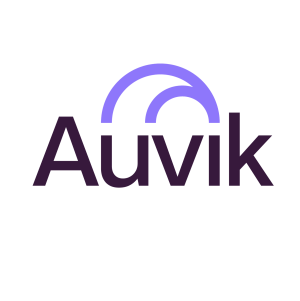Our use cases include tracking down what end-users are using. We leverage it from an onboarding and offboarding perspective, so that when a user is exited from an organization or separates, Auvik SaaS Management allows us to produce a report very quickly to see what they've been using. Beyond the stuff we know, we also know if they were sharing accounts with somebody. That allows us to quickly remove access and then ask people that are still there.
And if we know that someone is coming into a company we know, based on similar users, what they need access to. It helps us to automate some of the onboarding and offboarding processes.
Overall, software discovery in an organization, what they're using, is the main use case.
The onboarding and offboarding aspects are valuable from an operational standpoint, as a managed service provider. Because we have that visibility, it really decreases the time we need to execute everything. We don't know what we don't know and Auvik SaaS Management closes that gap. With it, we know everything that they've touched from a software perspective and in terms of shared accounts. Without it, it would be virtually impossible to know those things.
When it comes to user offboarding, Auvik SaaS Management gives us a two-click checklist of everything that the user has access to, and it lays out what we're responsible to terminate access to and what stakeholders within the organization are responsible to terminate access to. We can use that playbook rapidly without anyone on my team or the client's team not knowing. We can reach out to a company's HR and say, "Did you remove that user's timekeeping, payroll app, et cetera, that we don't have access to?" It is important to check those boxes. Especially if they're subject to any type of compliance, they have to do that. The chances of that getting missed or of realizing we didn't cut access for six months because we just forgot—that doesn't happen anymore.
The efficiency that results from not missing things helps save us time. And the solution definitely cuts the amount of rework when onboarding users to see what they should have access to in comparison to other users, or when offboarding and not having to double and triple check if we have missed something. There are definitely time savings there. It adds massive efficiency to our user onboarding and offboarding processes.
From a software reporting standpoint, Auvik SaaS Management saves massive amounts of time. The tools that we had in place before Auvik SaaS Management would give us a complete on-prem software inventory, and then we'd have to spend lots of time interviewing, watching, and figuring out what people were using and how. And even then, we'd be missing probably 30 to 40 percent of the picture, because they didn't realize they were using something or the person we were talking to wasn't one of the two people in a 100-person organization leveraging a particular platform. Understanding what is in use within an organization would otherwise be a mostly manual process or a matter of pulling massive reports from our RMM platform, reports that we would have to dig through to figure things out.
And we're able to leverage the platform, in the context of our strategic consulting practice, to sit down with business stakeholders and discuss shadow IT and security; what they're doing, and why. It's an invaluable tool to have to help force those conversations. It helps our strategic consultants, our vCIOs have discussions around SaaS at a deeper level. The insights we gain from the platform help to drive major discussions about security as it relates to cloud-based applications and their use within an organization. It has really made an impact in that practice and has helped to drive revenue. It's an easy discussion starter about the bigger picture.
Understanding where data resides is absolutely critical, from both a day-to-day security and operational standpoint, but also in the event of a major issue or security event. If we don't know where our data is, that's obviously a major problem. Using Auvik SaaS Management to identify that on a lot of different levels makes it an invaluable tool for us.
Using Auvik SaaS Management has absolutely helped to mitigate our risk from shadow IT and data sprawl. Being able to visualize where stuff could be—giving us a starting point for all the apps that are touched within an organization, which is where data could reside—allows us to deal with it. That mitigates the risk of having people working outside of authorized applications, or a situation where the legal department is transacting within a personal Dropbox account instead of using OneDrive. There could be insurance issues where a policy won't cover us because someone used a personal space for data and it somehow leaked out. It definitely helps to mitigate that, broadly. It allows us to sleep better at night, for sure, knowing what is in use across the organization and what data could be in there.








